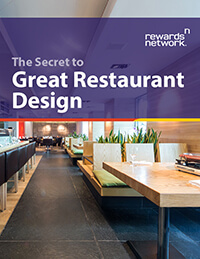Updating your restaurant design is always a daunting task which can include high stress, multiple expenses, and a painful reliance on outside vendors. And one thing is always true:
Waiting to fix a problem until it’s too late can be a big mistake for your bottom line.
When looking around your restaurant and talking to customers, ask yourself:
- What makes sense to renovate?
- How do I decide what will affect my profits most?
- How do I keep business going during remodeling?
- How do I pay for a new restaurant design?
Download this free eBook today to see how you can take your business to the next level, expand your space, and increase your restaurant sales.
Excerpt from Chapter 1:
How do you know when it’s the right time to remodel your restaurant?
It’s always a tough call when every penny and meal service really matters. How do you know that you’ll get back what you put into the changes you’re making? And what changes will actually have the best return on investment? Although traditional remodels are often overlooked as being merely aesthetic in nature, both functional and visual renovations can have significant long-term effects on your bottom line.
When asked, nearly half of restaurateurs surveyed by Rewards Network insisted that the quality of their food is the number one driver of repeat business, but our own data shows quite a different reality.
Overall experience is one of two key drivers — along with rewards offered — dictating how likely it is that a guest will make a return visit. In a survey of more than 99,000 diners nationwide, Rewards Network found that even if guests rate food higher than overall experience, their likelihood of a return visit drops by 20-38 percent.
And key to a positive experience is that nebulous thing called ambiance, or atmosphere. What factors into ambiance? Cleanliness certainly does, although perceived cleanliness is also part of that. A slightly worn environment can be cleaned thoroughly and still not leave the same impression as a room with un-nicked walls, still-spry carpeting, and modern fixtures.
And as price point in the restaurant market increases, so too does consumer expectation.
Where are you leaving money on the table? The expectation in any remodel is that it has a long-term financial effect, so part of determining what improvements to make involves finding holes in your current offerings where more revenue could be made.
Does your location receive great summer foot traffic, but you don’t have a patio or outdoor seating? Do you frequently get seating requests for large groups and have to reconfigure tables, rather than booking them into a private party room?
Or, conversely, do you frequently seat two guests at a time, but all of your table sets are for four? The right mix of seating for your clientele is crucial to getting the most efficient table turns and maximum revenue flow through your dining room.
But lost profit is not all about the front of house. Consider areas where you might be losing efficiency in the back of house, as well. Do you have work areas that are constant jams during busy times? Is everything in your kitchen arranged in an order and flow that makes sense for your service?
It’s quite possible that a prep area that requires five employees to staff because of its placement and equipment may only need three per shift if properly reconfigured, rebuilt, or updated with newer technology. Something as simple as a freezer drawer or chopping station in an awkward location could be costing you work hours and benefits that could be redirected toward achieving higher output.
Ultimately, when considering a remodel for your restaurant, it’s important to make choices that align with who you are and with your overall brand. Adding a cocktail fountain to your family restaurant may seem like a cool idea, but it might not play with your regular guests — and may even alienate them. If you’re going to go after a fad, you have to make sure it makes sense for your clientele.
Think, too, about your environment in the process of remodeling. Restaurants that rely heavily on a small group of frequent diners may find closing for even a short time for wholesale construction prohibitive. On the other hand, putting a highly discerning or finicky dining crowd through progressive remodeling while open could cause problems, as well.
Whether you complete a remodel in one fell swoop or over a longer period of time, there are financial implications — but there are also concerns that will never appear on a contractor’s quote.
Are you really equipped for what the addition will entail? Do you have the staff to back it up once complete? If not, keep in mind that even smaller changes can be make a big difference. For example, nothing is worse than getting a chef’s beautifully prepared meal presented to you on a substandard plate. And something as minor as investing in stemless wine glasses lowers breakage, saving you money over the long term.
